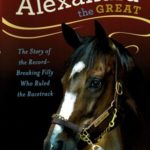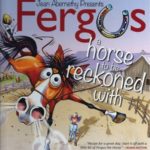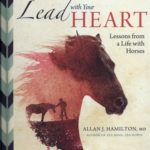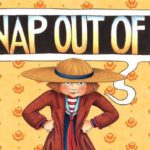Sitting down for an interview with The Journal in 2007, John Hoyt removes his straw hat as he slowly walks through the door and carefully makes his way to the couch.

?About three years ago, I had my knees operated on and a nerve was cut that goes down to my foot. I?ve been grounded ever since,? the 77-year-old horsemansaid, adjusting his body into the couch?s soft leather upholstery.
Walking is painful, going any distance impossible. But what pains John most is the theft of his passion: riding horses.
?When I ride now, my leg kind of turns in,? he says. ?I can’t put any weight in the stirrup without my ankle turning.?
John had the problem looked at, but the doctors told him nothing could be done to repair the nerve damage.
?About the only thing I can do anymore is drive,? he says.
That’s mostly how John gets around nowadays, traveling the Texas roads around Gainesville, Whitesboro and Aubrey in his gray pickup to visit friends.
?I love the horse people,? he says. ?I love being around them.?
But it’s the four-legged friends John loves most.
?I love the horses,? he says. ?But it has always been that way, as long as I can remember.?
Born to the West
John was born in Arcadia, California, which today is the northern edge of Los Angeles. Although he grew up in a mostly urban setting, he did nothing but dream of becoming a cowboy.
?When I was a little kid, I used to run away from home to go to the horses,? he says. ?Then it was all stables, and I would lead them to water so I could ride them bareback.?
When John was 3, his mother was widowed, leaving her to raise six children on her own. She tried to keep John at home, away from horses, and the neighbors often saw her rushing down the street shouting, ?John! Come back, John!? But by the time he was 8, she?d given up, knowing she was no match for his obsession.
At 10, John found a paying gig when Guy Corpeand his son-in-law, Don ?Pooch? Lieber, hired him to ride horses. He was also working with up-and-coming horsemen Red Lott and Jimmy Williams.
?Corpe and Pooch were big-time racehorsetrainers in California,? John says. ?They?d give me a $1 a day to top his horses off because more of ?em were green colts. I thought I was a big-time rider, but I was really too young to work for that deal. Corpe even had to go in and collect my paycheck for me.?
By 13, John was being hired as a jockey at small dirt tracks. This was during World War IIwhen the country was under a blackout and the big racetracks weren?t even operating.
?You know, match racingwas pretty good at that time, and I was small enough that I was racing a lot,? he says.
Although riding racehorses was fun and a way to make a buck, John still had the desire to become a cowboy.
?I thought that ?cowboy? meant the world,? he says.
In the summers of 1948 and 1949, he was roping and rodeoing. But during the off-season, he was finding it hard to pay for practice cattle.
?I came back after rodeoingup in Oregon one summer, and the guy I used to ride racehorses for said there was a ranch down in Arizona that wanted to hire somebody to train racehorses. But he also told me they had a roping arena and I could rope all I wanted. So, boy, that sounded fine to me.?
Underneath the Arizona Skies
John arrived at the Double F Ranch in Dragoon, Arizona, in late ?49. The ranch, owned by W.S. and Rose Fulton, was one of the better horse operationsof the day. They even stood Ben Hur II P-420, an own son of the great American Quarter Horse Ben Hur.
?These people were so damn nice. I?d never had people be this nice to me,? he recalls.
However, the Fultons were in the process of shifting their program from racehorsestoshow horses. John had only one racehorse to take to Tucson?s Rillito Parkand was soon also working with the Fulton?s show horses.
?I trained all of their horses. Mrs. Fulton had in her herd some of them really great early horses,? he said.
Training show horses came easy for John.
?Horses are definitely a little smarter than what people say,? he says. ?They are so easy to read. After you?ve been around them a while, you can figure them out.?
John left the ranch for a couple of years to enter the U.S. Army. When he returned to Arizona, he decided he was going to start rodeoingagain.
?I had a lot of mustering out pay because I only drew partial pay all that time, so I thought, ?Man, I?ve got some money.? Well, I go home and go down to visit the Fultons, and they are so happy to see me. So I didn’t go rodeoing.?
Instead, John bought a truck and decided to get serious about showing Quarter Horses. He stayed at the Fultons? until 1958, and while there, he showed some great horses.
?They started a deal in the Arizona Quarter Horse Breeders for the all-around horse,? he says. ?The first year was in ?56, and I won it riding one of the ranch horses named Canyon Tony. The next year, I didn’t have a horse, but I came back the year after that with Canyon Tom, who was a full brother to Canyon Tony.
?This horse was a real sensation. He was a halter horse. He could run and stop. I?d win reining, the cow horse, the ropings, everything that could be done on a horse. So he ended up being all-around for the next three years.?
Maker of Men
After leaving the Double F, John leased a public boarding stable in Phoenix and named his new business the Arizona Horse Lover?s Club. The stablehad 20 stalls on 10 acres right off Central Avenue and was the host of four or five Quarter Horse shows a year. The clubhouse on the stable grounds was used for parties and dances after the shows. It wasn?t long before John was training riders as well as horses.
Linda (Salmon) Hamilton, the 2005 Select world champion reiner, was one of John?s first youth riders.
?As a kid growing up, I thought he was just magic with a horse just because he did all those things that none of us ever knew about or did,? the Scottsdale, Arizona, resident says.
Two other well-known youth students of John?s were Al Dunningand his wife, Becky.
?I taught them both,? John says. ?Matter of fact, when Becky was young, she used to beat Albert almost every weekend. It’s the truth.?
Perhaps one of the reasons for Becky?s many wins was her mount Cherizan, one of John?s all-time favorite horses. She purchased the mare from John as her youth horse.
?She was probably the winningest horse I ever rode,? he says. ?She was a little palominomare that wasn?t too big, about 14.1 or 14.2, and she had no big bloodlines in her pedigree. But she trained so good, and she had a heart as big as anything. I might show her 17 or 18 times in one weekend, and she?d bring home 15 firsts. I can’t think of taking her anywhere that she didn’t win.?
Matter of fact, the mare also did well for a very young Jackie Krshka, the daughter of legendary trainer Jack Kyleand now an AQHA Professional Horsewoman.
?I had to show this stallion in halter in Albuquerque, so I asked Jackie to ride Cherizan,? John says. ?She told me she had to ask her father. But pretty soon, she came back, handed me the horse and said, ?I beat everybody in the class but my daddy. He was first.? Her daddy was on Billietta, a mare no one could beat.?
Tall in the Saddle
When John first started exhibiting Quarter Horsesin Arizona, there were only about six shows a year, but he hit all of them, as well as many others in the surrounding states.
?Those early shows were so much fun,? John says. ?We used to have parties, and we all had to camp out because there wasn?t motels at a lot of the places we?d go to show. We?d have a big cookout, and all the trainers and all the customers would be there together.?
In a 21-year span beginning in 1956, John?s horses accounted for 18 of the all-around performance awards presented annually by the Arizona Quarter Horse Breeders Association. Of the first 15 Supreme Championships, John rode three of them: Enhanced, My Stormy Boy and Study Hall.
He also competed in the first AQHA World Championship Showin Louisville, Kentucky, in 1974, winning the western riding aboard San Benito Bob, the all-time leading point earner in open western riding. He showed in every World Show until the late ?90s.
John was considered one of the best by his peers, but he also admired? many of those he competed against.
?I always enviedJack Kyle. He was one of them kind of people that lived on a ranch, and he rode such good horses. I was always envious of those big, pretty Wiescamp horseshe rode,? John says.
One of John?s toughest rivals was California trainerGreg Ward, who always seemed to show up and win John?s coveted all-around award. But there was one time he got the best of Greg.
?I had this big gray horse I?d bought off the racetrack. I was going to make aSupreme Championout of him, and I did everything on him but he just couldn?t quite win a class.
?I took him to Bakersfield (California) hoping I could win an all-around. I showed that horse in all the jumping stuff, English pleasureand everything else. Well, around noon, Greg showed up, and I told him, ?Well, Greg, this is one time I have you beat from the start.? He said, ?What do you mean?? I told him, ?Hell, I got so many points even if you win the class and I come in second, I’m still going to beat you.?
?Greg pretty soon just checked out and went home. Greg was really a neat guy, though. I really loved him.?
New Frontier
For many years, there weren?t any double-judged events, and AQHA didn’t allow two consecutive shows on the same ground.
?You had to have one here and one over there, and then come back to the first one,? John says.
To help exhibitors accumulate points without having to travel a lot of miles, several states created show circuits.
?One day, Rick Johns,? Jim Pauland I were sitting on a tailgate talking about horse shows and this and that, and we decided that Arizona ought to put on a big circuit,? John says.
In 1972, John?s friend Ruth Adams proposed a circuit of shows and asked the three men to help her with it. Over lunch at Mag?s Ham Bun in Scottsdale, Rick, John and Jim came up with the name Sun Country Circuit, and Jim drew the logo on a paper napkin.
The first Sun Circuitwas in 1973, and exhibitors from 24 states and Canada competed in six shows plus a youth show. With more than 3,000 entries and 461 horses, the classes were so large that two shows ran more than 25 hours.
In the beginning, the show alternated between Paradise Park at McCormick Ranch and Yale Siminoff?s Stables in North Scottsdale. In later years, it rotated among Scottsdale, Phoenix and Tucson.
Today, the Sun Circuitis the largest Quarter Horse circuit in the world, offering eight AQHA shows at WestWorld in Scottsdale.
?It’s grown to be so big,? John says. ?It’s hard to believe it was something thought up by three cowboys sitting on the back of a pickup.?
Red River Range
In 1977, John married his wife, Grace, and the two decided to start a new life in North Texas? horse country. They first leased property in Aubrey and later in Lone Oak.
?That’s the biggest regret I ever had,? John says. ?I always felt like I could rent a place cheaper than I could buy it. Pretty near everybody I know that bought property 20 years ago and later sold it ended up with quite a bit of money. When I first moved to Texas, if I would have bought some place, I could have made a lot of money.?
What attracted John to North Texaswas sandy ground and? Bermuda grass.
?It’s perfect for raising and training horses,? he says.
In North Texas, John also attracted a different clientele.
It was there he was sent Steve Strong?s Bueno Chex Imp, a horse John considers one of the best he has ever trained. The sorrel son of Bueno Chexwas the 1986 senior working cow horse world champion and the 1986 high-point working cow horse stallion.
?I guess you would really have to call him my best,? he says. ?He was a really good horse.?
Other standouts were Lyndell Adams? mare Hanfulla Charm, the 1980 junior western riding world champion, and Robert Karuth?s Hob Nob Kip, a National Reining Horse Association? earner of more than $10,000. Matter of fact, it was Hob Nob Kip that took John to win the first-ever NRHA Legends Invitational Class in 1995.
John had taken the little bay gelding by Expensive Hobbit, a full brotherto the renowned Expensive Hobby, to the NRHA Futurity the year before. At the 1995 NRHA Derby, John along with eight other legendary horsemen and women like Bob Anthony and Clayton Woosley, were invited to participate in the Legends class.
?I had a great time winning that class,? John says. ?It was fun competing against those fellas again.?
Trouble Along the Way
John was training and showing horses up to the time his knees gave out. He left his Lone Oak ranch and decided to move back to Arizona to live with his son.
?But it just didn’t work out,? he says. ?So I decided since I could still drive, I would come back down here. At least I can be of service to something, and I love the horses. I love being around them.?
AQHA Professional Horseman Pete Kyleoffered him a trailer to live in at his place in Whitesboro, Texas. Pete also helped John set up his custom-made tack business.
?I sell bits and curbs,? John says. ?So anytime there is a horse show around here, I take my little box and sit there. I don’t do great, but it gives me something to do.?
John?s curb chainsare popular with many reiners.
?Everybody calls them Hoyt curb chains,? he says. ?They?re a little bigger than the ones you buy in the saddle store. They are 5/8 wide.?
NRHA requires that curb chains be at least half an inch in width.
?But it doesn’t say anything about being bigger,? John says. ?About six or seven years ago, Francois Gauthiergot disqualified because his curb chain wasn?t wide enough. It cost him $17,000 that day. Since then, I?ve sold nothing but curb chains because they are bigger.?
And even though John can no longer ride, his horse smartsare still in great demand.
NRHA non-pro rider Ron Thompson, who lives near Pete?s place, says John has been invaluable.
?A little over a year ago, he broke his foot, and he moved in with me and my wife for a few months,? Ron says. ?I?d known him before that, but while he was living with us, he would come out and sit on the edge of his pickup truck and give me advice while I was working my 2-year-olds. After his foot healed, John continued to visit the Thompsons, regularly going to their place for lunch. His advice continued, as well.
?I had one tough horse, and I was about ready to walk away from him and throw up my arms in the middle of the summer,? Ron says. ?But one day John told me, ?You?ve got to give a little bit to get a lot.? It finally sunk in.
?His real simple little tidbits of advice make a world of difference on the ponies. The man just has so much knowledge and is so good about communicating what needs to be done. He still has a lot to offer.?
Ron considers John a member of the family.
?This makes me a little emotional to even say it, but when he tells me he’s proud of me, that’s like winning the Futurity,? he says. ?He has told me several times he’s so proud of me and what I’m doing with my horses. That meant more to me than winning the Futurity ever could.?
Without Reservations
It’s his friends and the horse people of North Texas that keep John looking forward to each day. After years of giving, he is now on the receiving end.
?It has been unbelievable. I don’t go nowhere that people don’t do something for me,? John says. ?They?re just so kind to me and so helpful and so willing. I?ve heard all my life that what goes around comes around, and it’s surely coming back to me now. I know that everywhere I go, people say, ?Stay all night.? ?
One day, John mentioned casually that he wished he had a porch on his trailer that he could sit out on.
?You wouldn?t believe it, but I woke up the next morning and here is Ron and Todd Sommersout there hammering and building me a porch,? he says.
Todd often went to John?s place for advice when the AQHA Professional Horseman first started riding reiners. Todd, as well as Robbie Schroederand Craig Schmersal, are some of today?s trainers John really admires. However, he doesn’t think they have as much fun as he did when he was showing.
?They are so disciplined,? he says. ?I’m pretty sure they think they are having fun, but in the early days, if you wanted to have a beer or whiskey or something, you just went and drank it. But it has changed so much.
?We survived for like $1,000 a purse and thought that was the big stuff a lot of times. It would be a $500 stake class, and now, you know, $500 won?t even buy your entry fees into one of these big reinings. Everything in the reining business, as far as the money part of it is concerned, I was probably born about 30 years too early.?
But John still feels privileged to have been a part of it.
?I can’t think of nothing I haven’t done,? he says with a smile. ?I?ve done it all, and I’m proud of it, too.?







